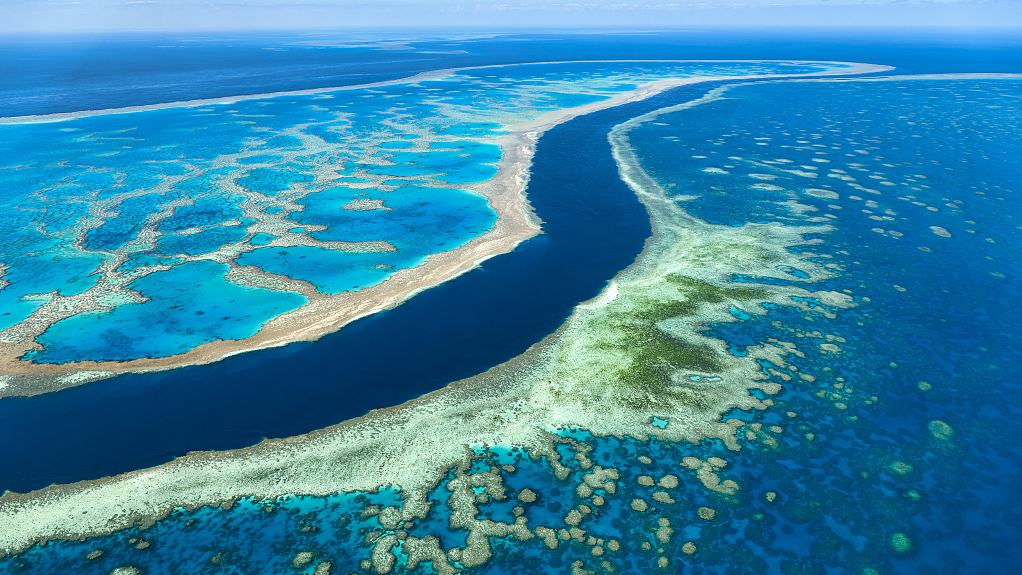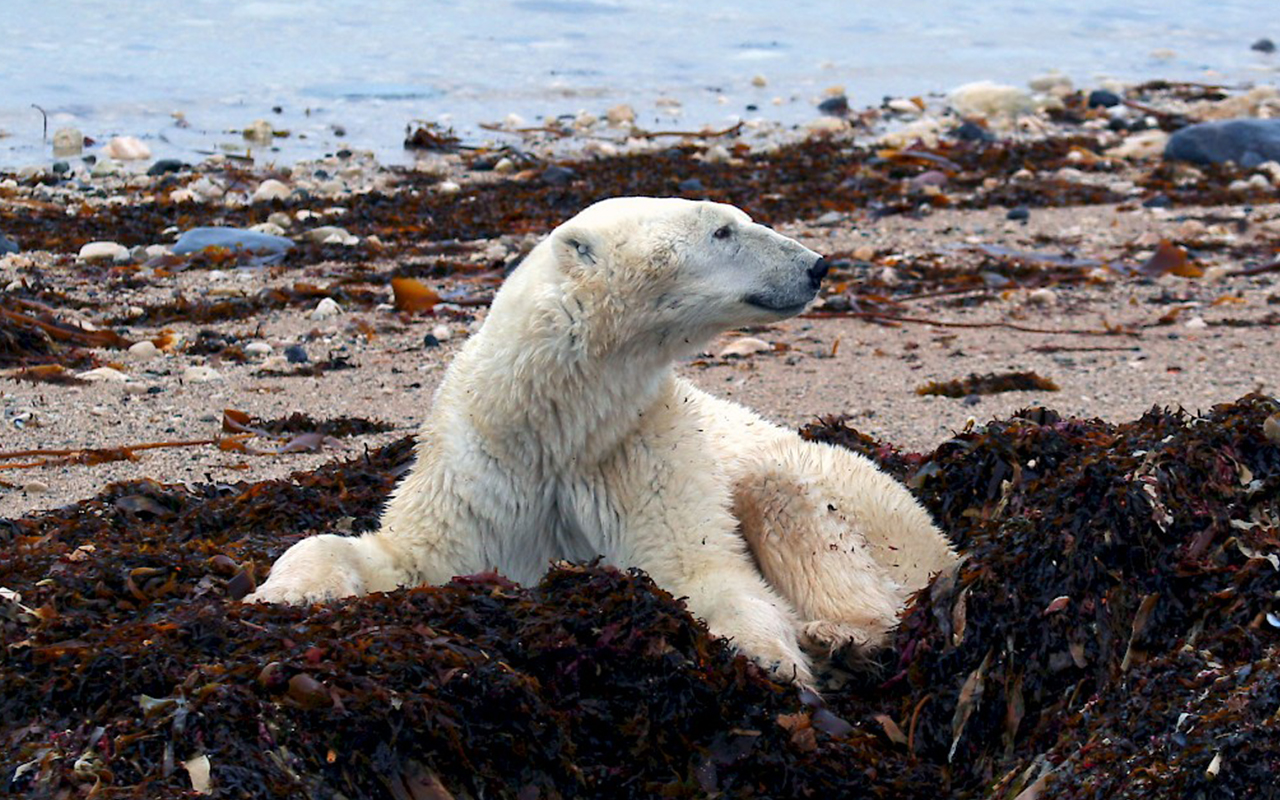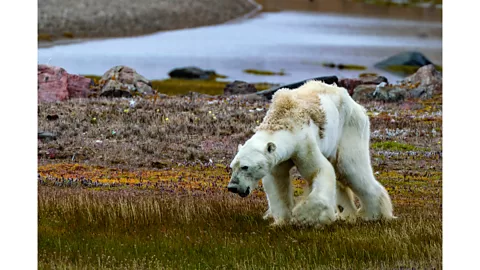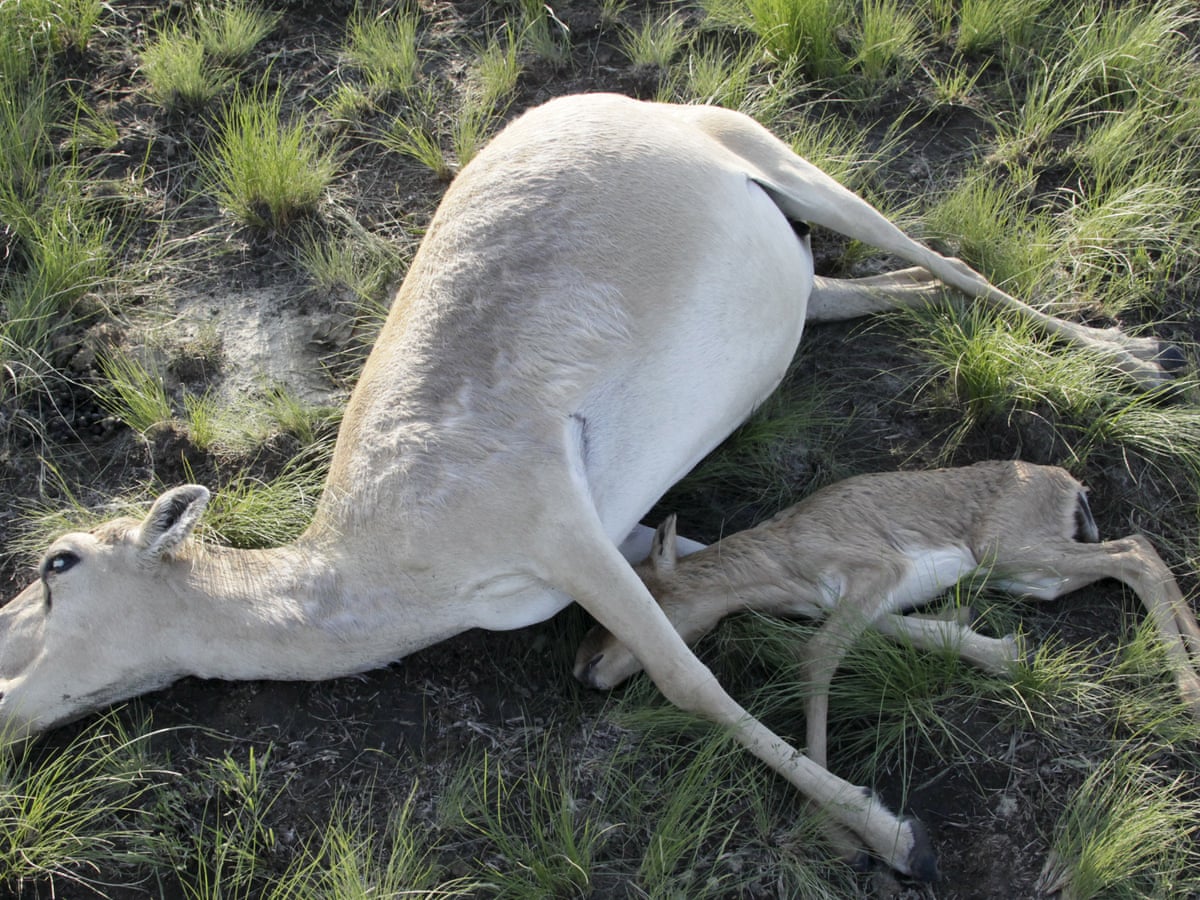Climate Journalism
World’s Largest Iceberg Threatens South Atlantic Island, As Great Barrier Reef Faces Catastrophic Coral Bleaching. Why Is Humanity Hell-Bent On Turning A Living Earth Into A Dead Mars
The Great Barrier Reef, one of the world’s most breathtaking natural wonders, is in grave danger. A new study reveals that coral bleaching on the reef has reached “catastrophic” levels, with record-breaking ocean heat devastating this iconic ecosystem.
Published
4 weeks agoon

Our planet, once teeming with vibrant ecosystems and thriving biodiversity, is now teetering on the brink of an environmental collapse that mirrors the desolation of Mars.
From catastrophic coral bleaching devastating the Great Barrier Reef to colossal icebergs threatening fragile ecosystems in the South Atlantic, the signs of a planet in peril are undeniable. Yet, humanity’s relentless pursuit of short-term gains—driven by unchecked industrialization, deforestation, and fossil fuel consumption—seems intent on accelerating Earth’s decline.
Why are we so determined to strip our living, breathing world of its vitality and transform it into a barren wasteland?

World’s Largest Iceberg Threatens South Atlantic Island
The world’s largest iceberg, A23a, is on the move, and its journey is raising concerns. This colossal chunk of ice, covering a staggering 3,672 square kilometers (1,418 square miles)—slightly smaller than Rhode Island but still over twice the size of London—has scientists and locals in South Georgia on edge. After being trapped for decades in the Weddell Sea, A23a is now drifting northward, carried by powerful ocean currents.
Its destination? Possibly the ecologically rich island of South Georgia in the South Atlantic.
For months, the iceberg had been spinning around an underwater mountain in what scientists call a “Taylor column”—a swirling vortex of water caused by currents hitting the seafloor. But in December, A23a finally broke free, and now it appears to be heading toward the island.
“It is presently in a meander of the current and not moving directly towards the island,” explains Andrew Meijers, a physical oceanographer at the British Antarctic Survey. “But our understanding of the currents suggests that it is likely to again move towards the island soon.”
The iceberg’s potential arrival poses several risks. Captain Simon Wallace, speaking from the South Georgia government vessel Pharos, noted the immediate dangers for maritime operations. “Icebergs are inherently dangerous. I would be extraordinarily happy if it just completely missed us,” he said, describing how his crew uses searchlights all night to spot rogue ice that can appear out of nowhere.
Beyond the risks to shipping and fishing vessels, the iceberg could have a profound impact on the island’s unique ecosystem. South Georgia is home to one of the world’s largest Marine Protected Areas and hosts a diverse array of wildlife, including seals and penguins. If A23a becomes stuck on the continental shelf, it could block access to critical feeding grounds, potentially affecting these species.
The iceberg’s history is as dramatic as its size. It calved from the Filchner-Ronne ice shelf back in 1986 and remained grounded on the Antarctic seabed for over 30 years. Scientists believe it only started moving when it shrank enough to free itself. Since then, it has been tracked closely as it drifted with the currents, defying predictions that it would break apart in warmer waters.

Great Barrier Reef Faces Catastrophic Coral Bleaching
The Great Barrier Reef, one of the world’s most breathtaking natural wonders, is in grave danger. A new study reveals that coral bleaching on the reef has reached “catastrophic” levels, with record-breaking ocean heat devastating this iconic ecosystem.
The situation is grim. In 2024, the reef experienced its worst summer ever, as soaring ocean temperatures caused the seventh mass bleaching event recorded in its history. Coral bleaching happens when extreme heat stresses the corals, forcing them to expel the algae living in their tissues. This not only drains their vibrant colors but also disrupts the delicate balance that keeps the reef alive.
Our relentless burning of fossil fuels, which is driving up global temperatures and pushing marine ecosystems to their breaking point. To make matters worse, the El Niño weather pattern intensified the heat, further accelerating the damage.
Scientists from the University of Sydney closely monitored 462 coral colonies near One Tree Island, a protected area of the reef, during the peak of the heatwave in early 2024. The findings were heartbreaking. By May, 370 of those colonies were bleached. By July, more than half—52%—were dead.
Some coral species suffered devastating mortality rates of up to 95%. Researchers even observed the beginnings of “colony collapse,” where dead coral skeletons detach from the reef and crumble into rubble. Adding to the devastation, certain corals like the Goniopora species were infected with black band disease, a deadly condition that invades and kills coral tissue.
“Our findings underscore the urgent need for action to protect coral reefs,” said Maria Byrne, lead author of the study. “These reefs aren’t just beautiful—they’re biodiversity hotspots and critical for food security and coastal protection.”
What’s particularly alarming is that this devastation happened in a remote, pristine part of the reef, far from human activities like mining and tourism. “Despite its protected status, the reef was not immune to the extreme heat stress that triggered this catastrophic bleaching event,” Byrne added.
The Great Barrier Reef is a natural marvel. Spanning nearly 133,000 square miles (345,000 square kilometers), it’s the largest coral reef system in the world, home to over 1,500 species of fish and 411 species of hard corals. It also contributes billions of dollars to Australia’s economy, largely through tourism. But this jewel of the ocean is being pushed to the brink.
Mass bleaching events have become disturbingly frequent, now occurring roughly every two years. Previously resilient areas of the reef are now being affected, with even the hardiest coral species succumbing to heat stress, disease, and death.
“Seeing these impacts on a reef that had largely avoided mass bleaching until now is devastating,” said Shawna Foo, a marine scientist and co-author of the study. “The high rates of mortality and disease, particularly in such a remote and pristine area, highlight the severity of the situation.”
What’s even more worrying is that the reef’s 2022 bleaching occurred during a La Niña event, which typically brings cooler ocean temperatures. If the reef is struggling under La Niña, what hope is there during future El Niño years?

Running Out Of Time….
The research illustrates an urgent message – we are running out of time. If we don’t act now to reduce emissions and protect these ecosystems, we risk losing one of Earth’s most extraordinary wonders—and all the life it sustains.
In the age of AI, humanity stands at a crossroads, trying to harness the immense power of technology to solve some of the world’s most pressing problems. AI promises to revolutionize industries, advance medical breakthroughs, and even tackle climate change. But despite these lofty goals, there’s a glaring contradiction – as we race forward with AI, we seem to be losing the battle to save the very planet.
AI, with its ability to process vast amounts of data and predict patterns, has been heralded as a potential game-changer in the fight against climate change. It can help optimize energy usage, improve resource management, and even predict environmental disasters. Yet, for all its promises, AI is also a double-edged sword. The very technologies we rely on to combat the climate crisis are also contributing to the problem.
So, what is humanity trying to achieve with AI?
On one hand, we’re striving for efficiency, convenience, and progress. We want smarter cities, more sustainable industries, and personalized solutions to everything from healthcare to education. We envision a future where AI is seamlessly integrated into our daily lives, improving everything from transportation to agriculture. The potential for AI to solve complex problems is enormous, and we’ve barely scratched the surface.
But on the other hand, we seem unable to turn the tide on the environmental destruction we’ve caused. We continue to extract and burn fossil fuels, deforest the planet, and pollute the oceans, all while pushing forward with technologies that could—if applied properly—reverse some of the damage. It’s as if we’re using a scalpel to cure the patient while simultaneously pouring toxins into their bloodstream.

Why are we failing to save Earth?
The answer is complex. It’s not just about technology. It’s about the systems we’ve built, the mindsets we’ve adopted, and the economic models that prioritize growth over sustainability. AI is a tool, but it’s being used within a framework that still values short-term profits and consumerism over long-term ecological health. The global push for AI innovation often overlooks the fact that, in order to make a real difference, we must change the way we think about progress itself.
In the end, AI can’t save us if we don’t first recognize that saving the Earth isn’t just about building smarter systems—it’s about rethinking how we interact with the planet. Technology can only do so much; it’s the choices we make as a society, and the values we place on the environment, that will ultimately determine whether we continue to race towards an AI-driven future or take a step back to ensure that future doesn’t come at the cost of our planet’s survival.
AI has the potential to play a pivotal role in saving the Earth, but it’s not a magic solution—it’s a powerful tool that can complement human efforts to tackle the planet’s most pressing issues.
Here’s how AI can contribute to a more sustainable future –
1. Optimizing Energy Use – AI can help reduce energy consumption across various industries by optimizing systems. For instance, AI-powered smart grids can manage electricity flow more efficiently, adjusting to real-time demand and minimizing energy waste. In homes and buildings, AI can control heating, cooling, and lighting systems, ensuring that energy is only used when necessary, cutting down on overall consumption.
2. Enhancing Renewable Energy – AI can be used to improve the efficiency of renewable energy sources, like solar and wind power. By predicting weather patterns and energy demand, AI can help energy producers better align supply with demand. Machine learning algorithms can also be used to optimize the performance of solar panels and wind turbines, ensuring they operate at peak efficiency, even in fluctuating conditions.
3. Predicting and Managing Climate Change – AI can analyze vast amounts of climate data to predict environmental trends, helping governments, organizations, and individuals prepare for climate change impacts. It can help predict extreme weather events like floods, droughts, or heatwaves, enabling better disaster preparedness and resource allocation. AI can also model the long-term impacts of climate change, guiding policy decisions and identifying areas most at risk.
4. Improving Agricultural Practices – AI can revolutionize farming by promoting sustainable practices. Precision agriculture, powered by AI, allows farmers to monitor soil health, track weather patterns, and optimize irrigation systems. AI can help reduce water usage, pesticide application, and the carbon footprint of agriculture, all while increasing crop yields. Drones and AI-powered sensors can even detect plant diseases early, preventing widespread damage.

5. Conserving Biodiversity – AI can aid in monitoring wildlife and ecosystems, helping to conserve biodiversity. For example, AI-powered cameras and drones can track endangered species, detect illegal poaching, and monitor deforestation. Machine learning algorithms can analyze vast amounts of environmental data to identify patterns in species migration or habitat destruction, enabling faster and more effective conservation efforts.
6. Waste Management and Recycling – AI can enhance waste management by sorting and recycling materials more efficiently. AI-powered robots and systems can identify recyclable materials, sort them faster and more accurately than humans, and help reduce landfill waste. In cities, AI can optimize waste collection routes and schedules, reducing emissions from garbage trucks and making waste management more efficient.
7. Carbon Capture and Storage – AI is also being used to enhance carbon capture and storage (CCS) technologies, which remove carbon dioxide from the atmosphere and store it underground. AI can optimize the processes involved in capturing CO2 and improving storage methods, ensuring that the captured carbon stays safely sequestered for the long term.
8. Monitoring Environmental Health – AI can monitor pollution levels in real-time, tracking air and water quality and providing valuable data to governments and organizations. By analyzing this data, AI can help pinpoint sources of pollution, predict trends, and guide regulations to mitigate harmful emissions. It can also monitor ecosystems, helping scientists detect signs of environmental stress and intervene before damage becomes irreversible.
9. Sustainable Urban Development – AI can help design smarter, more sustainable cities. By analyzing traffic patterns, urban development trends, and energy consumption data, AI can optimize public transport systems, reduce traffic congestion, and make cities more efficient. Smart cities powered by AI can reduce waste, improve air quality, and create healthier living environments for residents.
10. Driving Innovation in Environmental Technologies – AI can accelerate the development of new, environmentally-friendly technologies. For example, AI can aid in the creation of more efficient electric vehicles, energy storage systems, or water purification methods. By automating research and development processes, AI can help bring sustainable technologies to market faster, potentially revolutionizing entire industries.
In essence, AI can help us not only monitor the Earth’s health but also actively work towards restoring it. However, it’s important to remember that AI is only a tool—it’s the choices we make, how we implement these technologies, and our commitment to sustainability that will ultimately determine whether AI can play a decisive role in saving the Earth.

Drill Baby Drill. Donald Trump
It’s frustrating to see such contradictions when it comes to leadership and the environment. Leaders like Donald Trump, who have advocated for policies like “drill, baby, drill,” often prioritize short-term economic gains over the long-term health of the planet. This stance can be detrimental, especially when considering the urgency of climate change and the need to transition away from fossil fuels.
The “drill, baby, drill” mentality stems from the belief that exploiting natural resources, particularly oil and gas, is a path to economic growth, job creation, and energy independence. But this approach ignores the broader environmental costs—like the impact on ecosystems, air quality, and, most importantly, the acceleration of climate change.
By promoting fossil fuel extraction and undermining environmental regulations, leaders like Trump contribute to the very problem that so many of us are trying to solve. Fossil fuels are a major driver of greenhouse gas emissions, and while AI can help mitigate the effects of climate change, it can’t undo the damage done by policies that perpetuate it.
It’s a tough situation because the fossil fuel industry has immense political and economic power, and some leaders see it as a way to secure jobs and maintain energy security. But, in the long run, this shortsighted approach risks the stability of ecosystems, communities, and even the global economy.
The irony is that while AI and renewable technologies hold the potential to help us transition to a cleaner, more sustainable future, political leaders still often seem stuck in the past, prioritizing outdated economic models that harm the planet.
This resistance to change illustrates the tension between economic interests and the need for urgent action on climate change. It also indicates the necessity for global cooperation and leadership that understands the urgency of addressing the climate crisis.
You may like
-


Taiwan Gears Up For A Major Military Deal With The US—Trump’s New Taiwan Stand Rattles China! Is Another Ukraine In The Making?
-
Trump’s Bold Gaza Plan Receives Netanyahu’s Backing. Will The World Allow Gaza’s Future To Be Shaped By Foreign Interests, Or Seek A Just Solution For Palestinians?
-


High-Stakes Peace Talks Ahead. Trump Team Leads, Zelenskyy Joins, But Ukraine Faces Tough Concessions—A Betrayal? Even As European Allies Watch In Disbelief
-


Is Trump Right About China Controlling The Panama Canal? Well, Not Exactly!
-
India Cuts Tariffs On US Bourbon! But Do Trump’s Retaliatory Tariffs Mean Cheaper American Goods For Indian Consumers?
-


Will Ukraine Get A Raw Deal Despite 3 Years Of War? Trump-Putin Alliance Puts Zelenskyy In A Corner, While Europe Senses Trouble—Can Europe Stop This?
